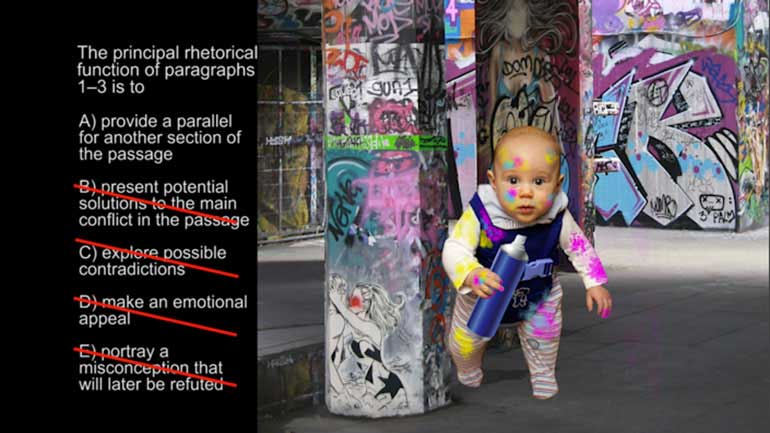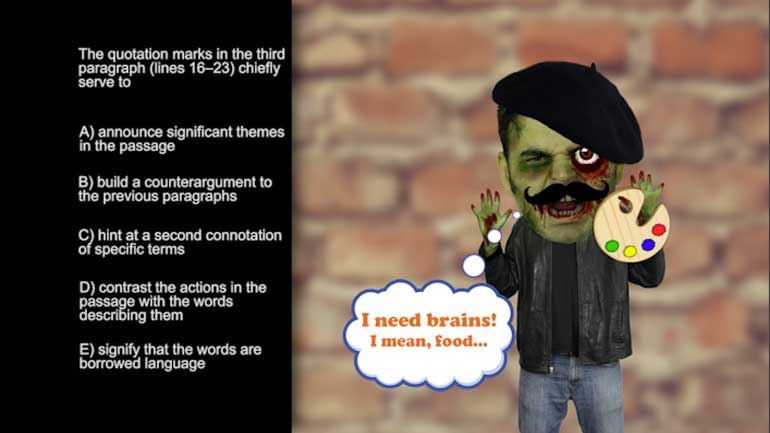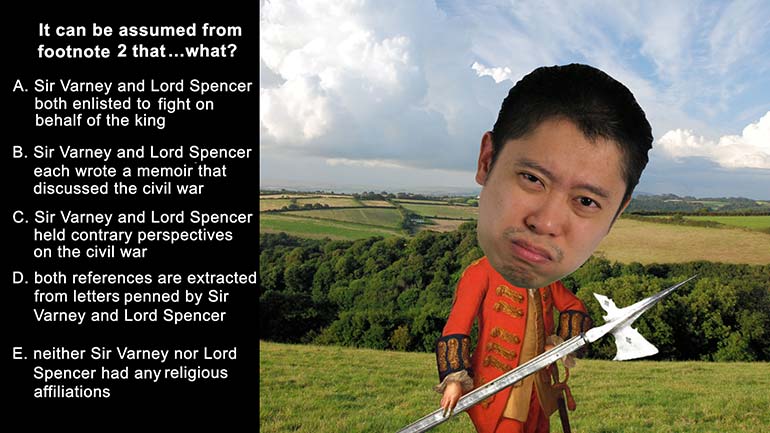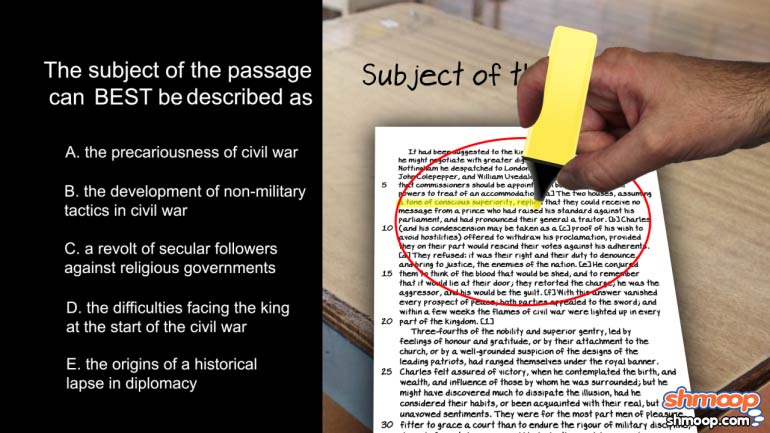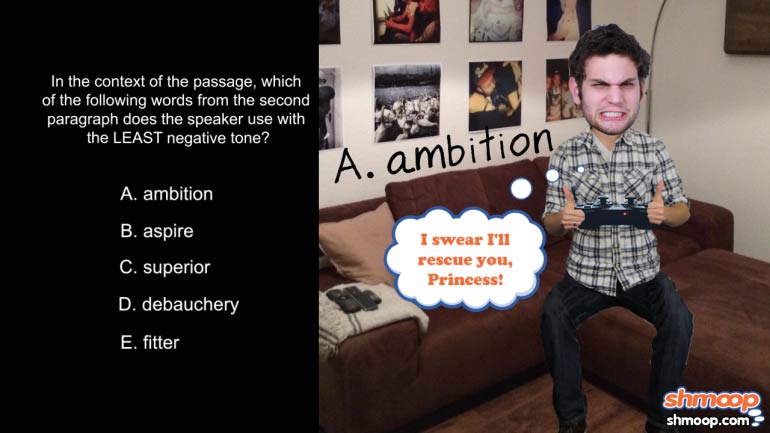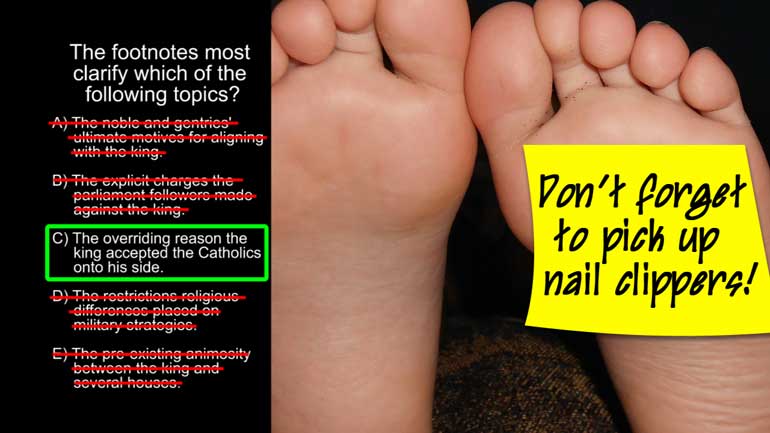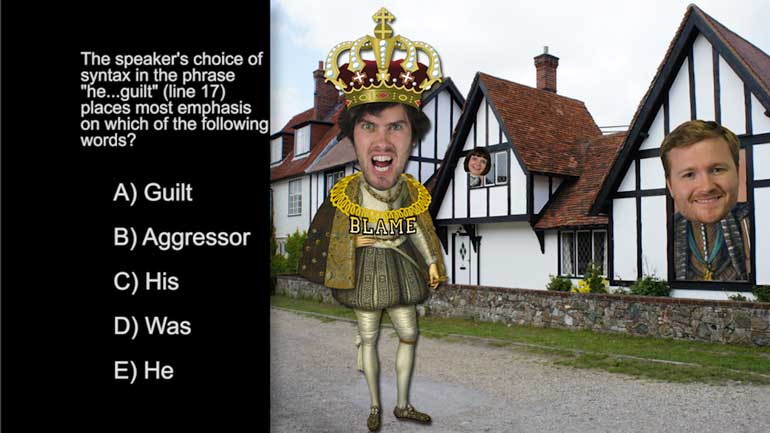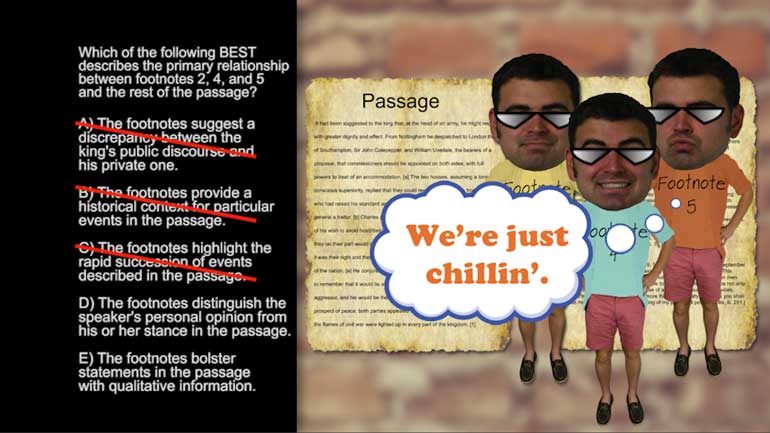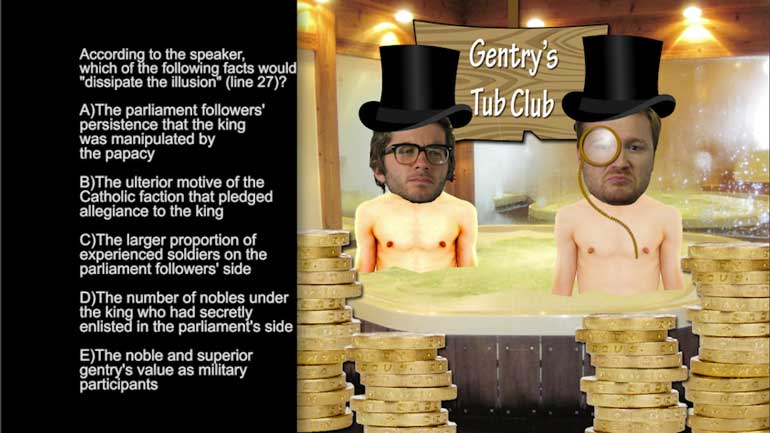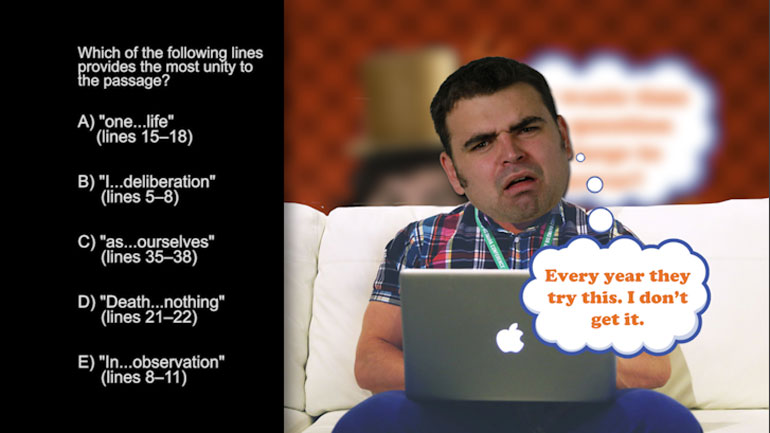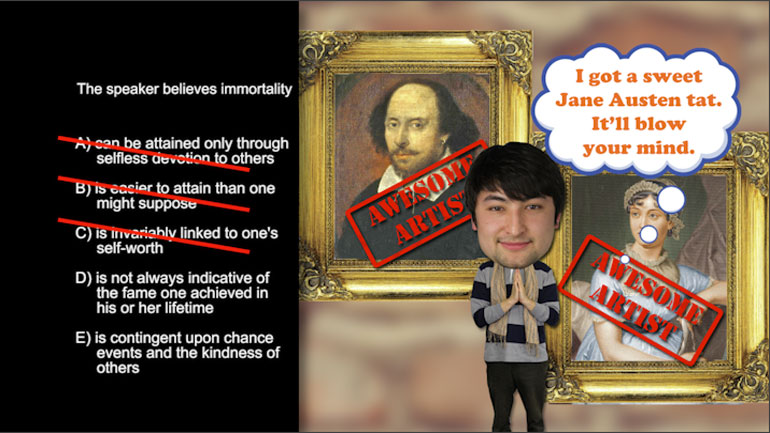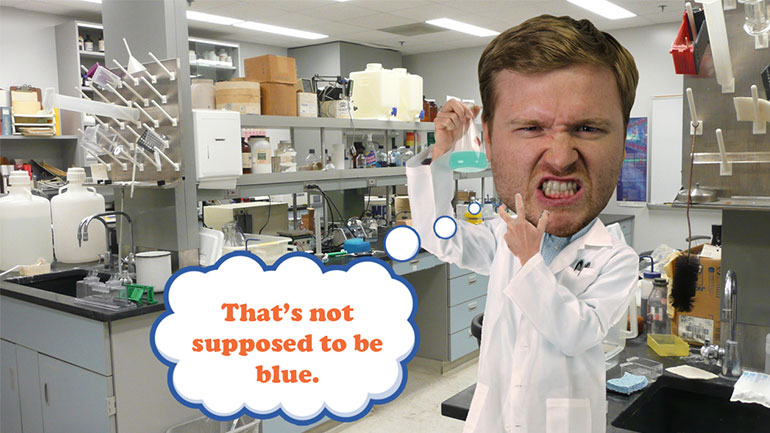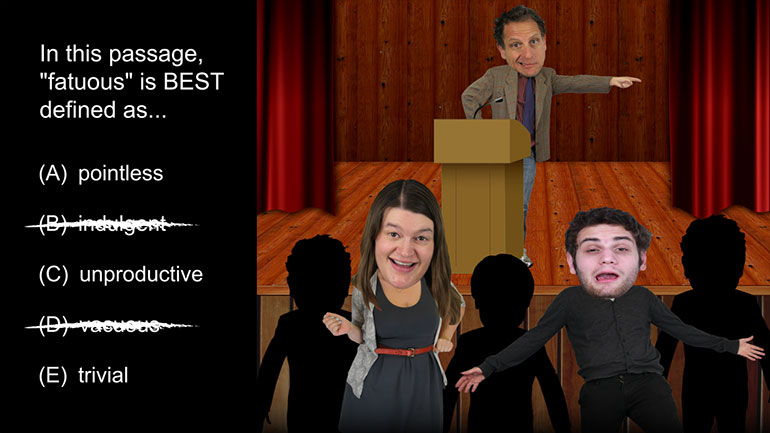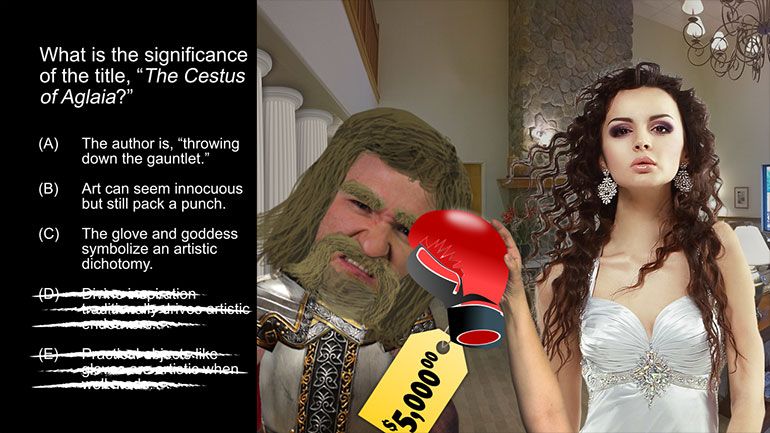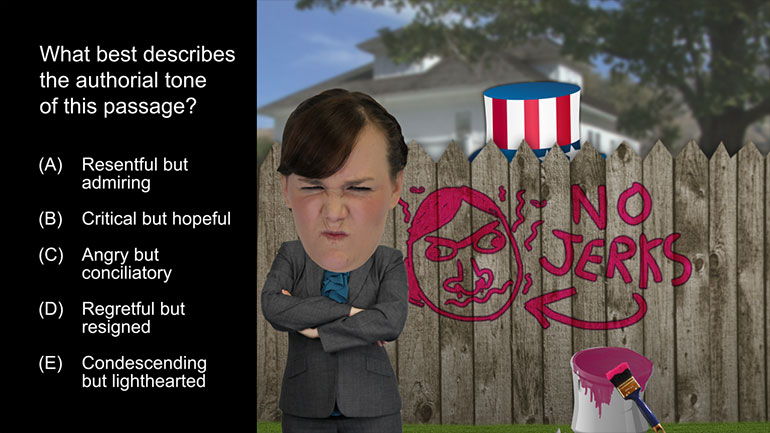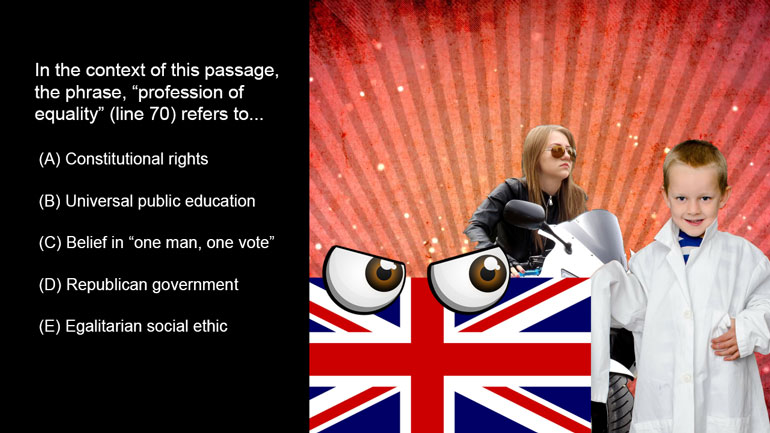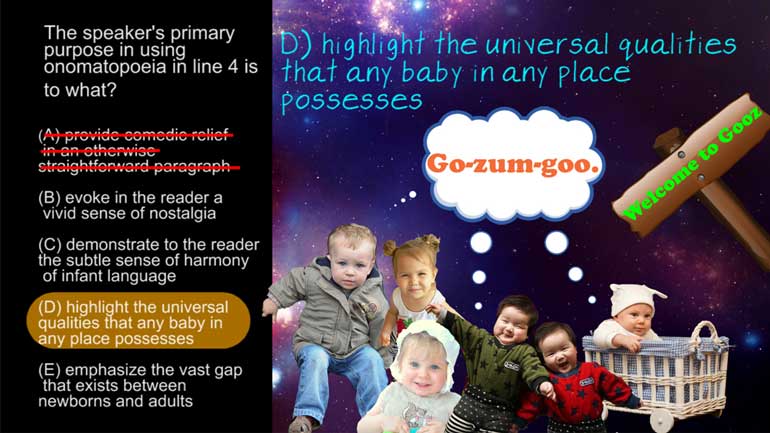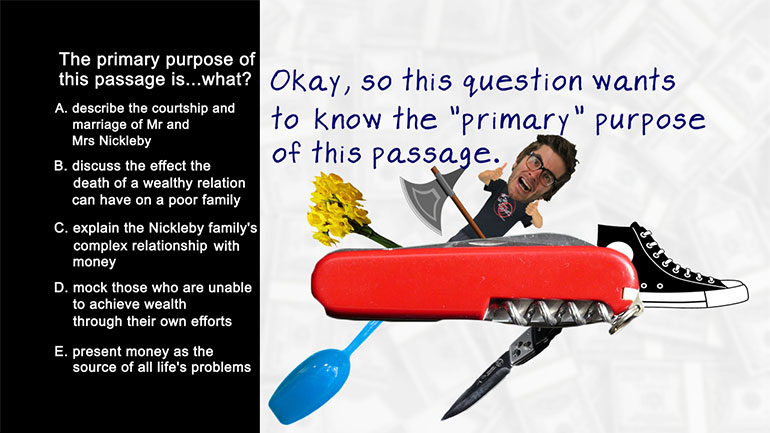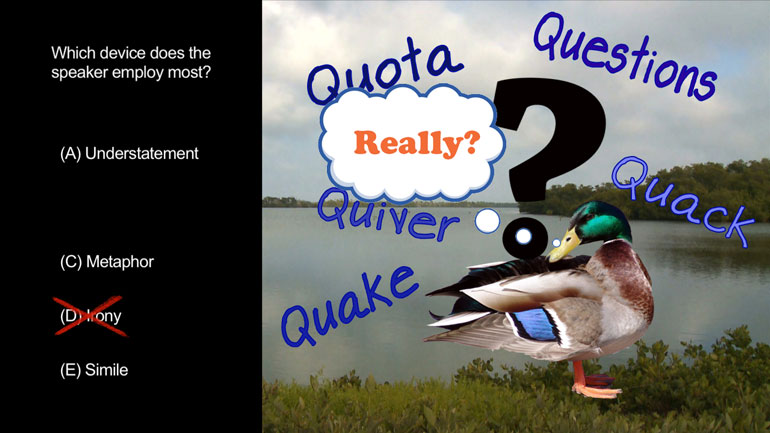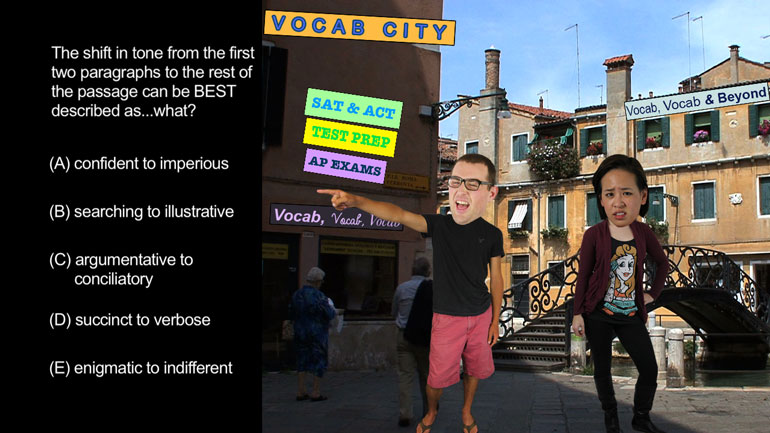ShmoopTube
Where Monty Python meets your 10th grade teacher.
Search Thousands of Shmoop Videos
Playlist AP® English Language and Composition: Passage Drills 40 videos
AP English Language and Composition: Passage Drill Drill 1, Problem 7. What is the principal rhetorical function of paragraphs one to three?
AP English Language and Composition: Passage Drill 1, Problem 8. The quotation marks in the third paragraph chiefly serve to what?
In this AP Language and Composition drill question, read the provided passage and infer information based upon footnote two. AP Language and Com...
AP English Language and Composition 9.5 Passage Drill 173 Views
Share It!
Description:
AP English Language and Composition 9.5 Passage Drill. Which of the following does the author not imply or assert in paragraph 3?
Transcript
- 00:00
Sorry And here's your shmoop du jour brought to you
- 00:05
by philosophers asking the tough questions since the beginning of
- 00:09
time All right we're skimming We're just going to skim
- 00:11
this like skim it fast like ripping off a mandate
- 00:13
hurts less if you do it quickly Philosopher said that
Full Transcript
- 00:16
one All right which of the falling Does the author
- 00:18
not assert or imply in paragraph three And here are
- 00:22
potential answers There we go No and we're going to
- 00:24
get paragraph three here pretty quick All right Does the
- 00:26
author researcher imply that aesthetic order in the past has
- 00:30
carried over to the present Well the author discusses order
- 00:33
in the sixth line of paragraph three For there is
- 00:35
a certain order or rhythm belonging to each of these
- 00:38
classes of min medic representation from which the hearer and
- 00:43
the spectator receive an intense er and pure pleasure than
- 00:47
from any other The sense of an approximation to this
- 00:49
order has been called taste by modern writers All right
- 00:52
Well by telling us what modern writers call this concept
- 00:55
we can assume that concept has been around for a
- 00:57
while So the authors implying that aesthetic order in the
- 01:00
past has carried over to the present but also a
- 01:02
is not our answer Does the author assert or imply
- 01:05
that the rhythms of dance music and language mimic nature
- 01:08
Well the author makes this assertion pretty plainly in the
- 01:11
first lines of paragraph three in the youth of the
- 01:13
world men dance and sing and imitate natural objects observing
- 01:17
in these actions as in all others a certain rhythm
- 01:19
or order well the youth of the world imitating nature
- 01:22
through art may not be as obvious is dancing babies
- 01:25
raining from the sky but we have a pretty strong
- 01:27
message here So be is not our answer Does the
- 01:29
author imply that order and rhythm differ according to the
- 01:32
art that expresses them Well again if we can decipher
- 01:35
the outdated english we find this answer pretty clearly stated
- 01:37
in the text And although all men observe a similar
- 01:40
they observed not the same order in the motions of
- 01:42
dance in the melody of song in the combinations of
- 01:45
language in the series of their limitations of natural objects
- 01:49
For there is a certain order or rhythm belonging to
- 01:52
each of these classes of mma medic representation Well while
- 01:55
no medic representation may sound like something related to the
- 01:58
practice of mining It actually refers to an imitation of
- 02:01
the real world and art which probably includes mining way
- 02:04
Suppose this quote not only provides further proof for our
- 02:07
art mimics nature answer But it tells us that each
- 02:09
form of nomadic representation has a different order and rhythm
- 02:12
which also tells us that sea is not the correct
- 02:14
answer Alright let's look att eat because the author assert
- 02:17
or implied that art gives pleasure conforms to an intrinsic
- 02:21
order This may be a bold statement It may disappoint
- 02:23
picasso but again we can find it right in the
- 02:25
text If we finish the last sense we looked at
- 02:28
we can see the author answers this question as well
- 02:30
For there is a certain order or rhythm belonging to
- 02:33
each of these classes of nomadic representation from which the
- 02:36
hearer and the spectator receive an intensive and pure pleasure
- 02:39
than from any other Well this is a pretty unequivocal
- 02:42
assertion The author definitely believes hearers and spectators get more
- 02:47
pleasure from ordered art than from a gn ordered art
- 02:51
Sorry picasso All right let's Get e out of our
- 02:53
lives Once again we're left with one option So let's
- 02:55
helps a good one Does the other sort of implied
- 02:58
that refined taste is essential to appreciating artistic expression Well
- 03:02
while a refined taste might be necessary to appreciate escargot
- 03:05
it is not essential to appreciating artistic expression at least
- 03:09
according to our author He mentions taste but never says
- 03:12
you need it in order to enjoy art So our
- 03:14
answer is d another literary mystery solved philosophizing that
Related Videos
Wishing upon a star may help you pass your AP English Language and Composition test, but answering this question would be a safer bet.
AP English Language and Composition: Passage Drill Drill 1, Problem 2. What is the speaker's primary purpose in using onomatopoeia in line four?
AP English Literature and Composition 1.1 Passage Drill 7. The primary purpose of this passage is what?
Take a look at this shmoopy question and see if you can figure out which device the speaker employs the most.
Feel like shifting gears and answering a question about shifting tones? We've got you covered. Take a look at this question and see if you can foll...
